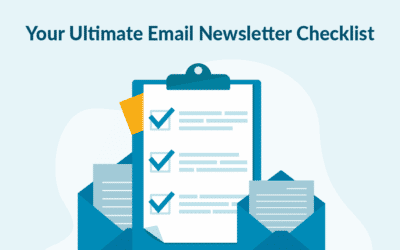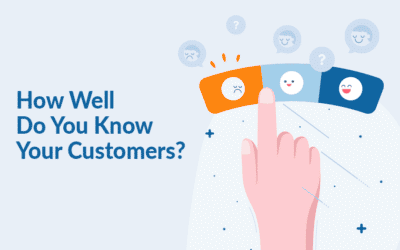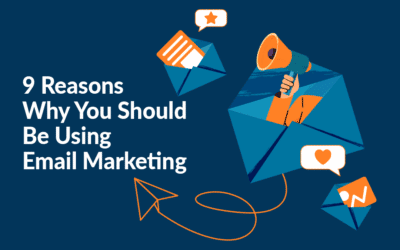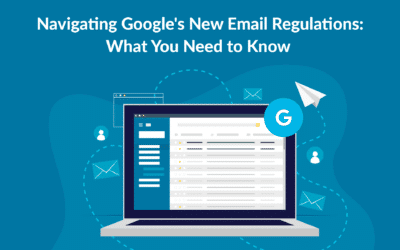Do you measure the full effect of your newsletter?
When sending out a newsletter, you have set some criteria in advance for whether the newsletter was a success or not. If you run a webshop, you first and foremost look at how many sales you can see registered. If you do not have a webshop, but just an ordinary website, you may be looking primarily at how many people write an offer for a given task. If a visit turns into a sale, we call it a conversion. You can see this conversion data in your webshop or websites, in a finance system or in an analysis tool such as Google Analytics.
It is therefore essential to use a good analytical tool for you to get as much insight as possible into your users’ behaviour, as well as what leads to the final conversion. It is not good enough to only be able to see conversion data in a webshop or finance system. You need to fully understand your data and decide which tools like Google Analytics, Open Web Analytics, Piwik, or Adobe Analytics can help.
However, your newsletter often brings more value than just the direct derivative conversion
As a starting point, goals and KPIs must be set up so that you have defined a success for you when you send out a newsletter or start with other marketing initiatives.

In order to get an overall view of the success of using newsletters, we can use the SMART model that stands for
- Strategic
- Measurable
- Attainable
- Relevant
- Time-based
For example, a SMART goal can be “We must have increased sales via the newsletter by 20% within the next 12 months”.
One can also disregard the strategic part and simply set the target for each newsletter that says “We must have sold 20% of the goods from the sales category or get 50% to put a product in the basket” (so you can later hit them with retargeting).
It can be dangerous just to keep an eye on direct macro conversions, among other things, because it can be demotivating not to see a sale coming directly from a click from the newsletter.
Next, for B2B companies or webshops, where there is no impulse purchase, there is often a longer path to a sale than just one click from the newsletter. The recipient of the newsletter may need to spend time considering the purchase and returning to the website several times before a purchase is done.
It is therefore important that you measure several things in connection with sending out your newsletter – and in fact, all your traffic channels.
You should take 3 following factors into consideration if the newsletter is successful:
- Look at macro conversions directly from the newsletter. It will e.g. say how many people have clicked in from the newsletter and have subsequently bought on the webshop, used offers on the website or something else.
- Look at assisted conversions in your analytical tool.
- Look at micro conversions, that for example can be an action or a goal, that is set in Google Analytics.
What is a macro conversion?
A macro conversion is a goal that can be measured directly on the bottom line or which is the primary goal of the website. It can for example be:
- Sales
- Lead
- Booking a table in a restaurant
- Booking of demo version
- Request about offer
- Registration to an event
What is an assisted conversion?
A traffic channel (Google Adwords, Facebook, organic traffic, newsletter etc.) can have 3 roles on the way towards conversion:
- The first interaction
- An assisted interaction
- The last interaction
The first interaction is the first interaction towards a conversion.That is, people click on the website via the newsletter but have not bought anything at first. Next, they might have googled for the product they saw in your newsletter the day after, and have subsequently re-entered via Google Adwords and then finally purchased the product.
The assisted interaction is any kind of interaction that is not the last click before a conversion. That is, you started to find the website via Google Adwords, then you clicked on a link in the newsletter and in the end, the following day, you visited the website via an organic search on Google and completed the conversion.
The last interaction is the last click before a conversion is made. That is, you clicked in the newsletter as the last thing before you made the purchase. It is this data you normally see when you in Google Analytics should evaluate which of your traffic channels have contributed to sales.
By looking at the above data you get a really good insight into when your traffic channel supports the goal you set up via the SMART model. You will therefore be able to see that even if the newsletter might not immediately give the desired sale, it actually had a large share in total sales, because people started clicking on a product in the newsletter, but it was not the last traffic channel they used before they bought something from you.
What is a micro conversion?
A micro conversion is a sub-goal that can help you move towards the ultimate goal. It can for example be:
- Add a product to the shopping basket
- Search on website’s internal product search
- Download a catalogue
- Like or follow on social profile or YouTube
- Content Sharing
- Video view
- Used contact form
- Write a review
Although micro conversions in their way may seem trivial, they are very important to keep in mind. Partly because they give an insight into whether your newsletter works as intended and whether people actually interact with your website when they click on from the newsletter, but also because micro conversions in the long term can lead to a macro conversion and therefore fulfill the ultimate goals.
When people have completed a micro conversion, but not yet a macro conversion, you can then target those people via retargeting. Because of the micro conversion, you know that they have shown interest in your product, since they have made an action, and now via retargeting you need to try to convince them to complete a macro conversion. Via retargeting, you can, in, for example, Facebook or Google Adwords, support the newsletter and ultimately redeem a macro conversion.
By taking micro conversions into the overall view, you get a broader insight into your target group and how they act. In addition, because you look at more than just one kind of conversion, you will realize that your newsletter and your other marketing initiatives are probably even better than you imagined.
Try MarketingPlatform for free for 14 days
The trial period is free, completely non-binding and expires after 14 days if you do not wish to continue.
When you sign up, you will also receive our educational flow via a series of emails along with our newsletter with regular updates.





